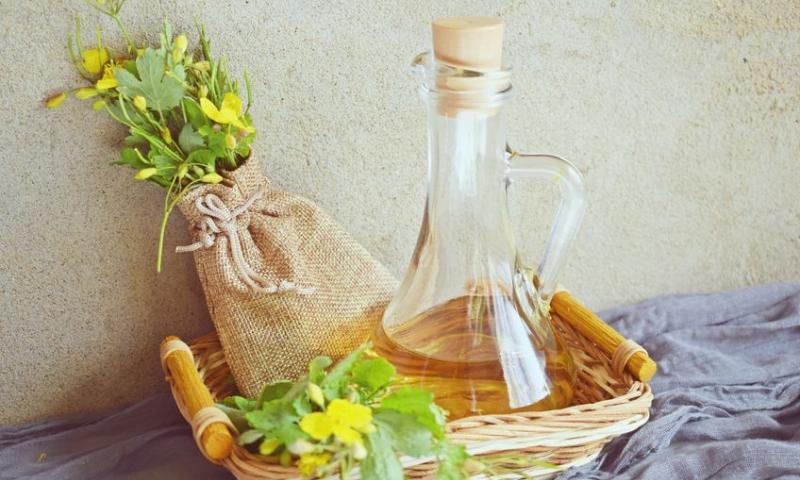 />
/>
LATIN NAME: Chelidonium Majus
CHINESE NAME: Bai Qu Cai
ORIGIN: Europe, Asia
HABITAT: Europe, Asia
It grows in small groups or singly. The plant is also found in light and shady broadleaf forests among bushes, less often in light coniferous forests, in groves and coastal shrubs. Celandine grows predominantly on nitrogen-rich soils. The ants that use seeds for food and carry them over long distances contribute to the widespread use of Celandine.
BOTANICAL INFORMATION: Botanists mention only one species of the genus Celandine- the greater Celandine (lat. Chelidonium majus L.) of the poppy family (lat. Papaveraceae). Celandine is a perennial herb. Celandine has a short rhizome and thick branched taproot, red-brown on the outside and yellow-orange on the inside. The stems are ribbed, up to 90 - 110 cm high. They are branched above, upright, bare or branched below, with leaves. Bottom and lower stem leaves have short stalks and sometimes can be pubescent. The leaves are deeply divided with 3-5 pairs of lobes, green above and gray below. In the middle of the stems, roots, rhizomes and leaves there is lacticifer. When cutting or tearing off parts of a green plant you can see the milky juice of a yellow-orange color. Flowers are collected in simple umbrellas. The flowers are golden yellow with four petals. Celandine has a very strong, repulsive odor and an equally unpleasant, bitter taste. Celandine blooms in May and June, flowering can continue even until early September. The fruits ripen in August and October. Depending on the place of growth, Chelidonium Majus can partially modify its appearance.
CHEMICAL COMPOSITION: A wide spectrum of therapeutic effects of the plant is caused by the presence of alkaloids - chemicals that have different effects on the body. There are about 20 of them in Celandine. Among the alkaloids, the most noticeable are protopine, sparteine, chelerythrine, helidonin, homohelidonin, methoxychelidonin, sanguinarine, helilyutin.
Saponins, flavonoids, organic acids (chelidonic, malic, citric, succinic), vitamin A (carotene), ascorbic acid, barberine, protopine, coptisine and essential oil are also found in Celandine.
HISTORY:
- Celandine was also used for livestock to solve it from deaths during mass epidemics.
- People come up with different names for the Celandine, and its scientific name in Latin means all the amazing properties of the plant. Celandine in Latin sounds like a "gift of heaven".
- The scientific name of the genus comes from the Greek word “swallow”.
- Carl Linna gave the name to the genus.
*This article is for informational purposes only. We suggest consulting a physician before using these or any other herbal supplements.
